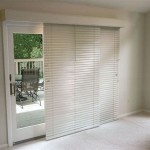Building a Pergola on Your Patio: A Comprehensive Guide
Adding a pergola to a patio can significantly enhance the outdoor living space, providing shade, visual interest, and a defined area for relaxation or entertainment. This article provides a comprehensive guide to building a pergola on an existing patio, covering crucial aspects from planning and design to construction and maintenance. Careful consideration of each step will ensure a successful and aesthetically pleasing outcome.
Planning and Design Considerations
The success of any pergola project hinges on meticulous planning and design. This phase involves assessing the patio space, establishing design parameters, and selecting appropriate materials. Neglecting this preliminary stage can lead to structural issues or aesthetic inconsistencies.
First, the existing patio should be thoroughly assessed. This includes measuring the available space and noting any existing features that might impact the pergola's placement or design. Pay close attention to the patio's dimensions, shape, and any existing structures, such as walls or landscaping elements. Documenting these details will aid in visualizing the final product and determining the optimal pergola size and shape. Consider the orientation of the patio with respect to the sun. The primary purpose of a pergola is to provide shade, so understanding the sun's path will help determine the optimal placement and orientation of the pergola's rafters to maximize shade during peak hours.
Next, the design aesthetics should be considered in relation to the existing architecture of the house and the overall landscape design. The pergola should complement the style of the house and blend seamlessly with the surrounding environment. Consider the architectural style of your home (e.g., modern, traditional, rustic) and choose design elements that mirror or complement it. For example, a modern home might benefit from a pergola with clean lines and minimalist features, while a traditional home might suit a more ornate design with curved features. Think about incorporating climbing plants to enhance the pergola's aesthetic appeal. Vines like wisteria, jasmine, or climbing roses can add a touch of natural beauty and further enhance the shade provided by the structure.
Local building codes and regulations must also be considered. Most municipalities have specific regulations regarding the construction of outdoor structures, including pergolas. These regulations often dictate the maximum height, setback requirements, and the need for building permits. Contact the local building department to inquire about specific regulations and permit requirements before commencing any construction. Failure to comply with local codes can result in fines or the need to dismantle the structure.
Material selection is a critical component of the design phase. The choice of building materials will influence the pergola's appearance, durability, and maintenance requirements. Common materials for pergola construction include wood, aluminum, and vinyl. Each material offers distinct advantages and disadvantages.
Wood pergolas offer a natural and aesthetically pleasing look. Common wood choices include Cedar, Redwood, and pressure-treated lumber. Cedar and Redwood are naturally resistant to rot and insects, making them ideal choices for outdoor structures. Pressure-treated lumber is more affordable but requires regular staining or sealing to protect it from the elements. Wood pergolas require periodic maintenance, including cleaning, staining, or sealing, to preserve their appearance and prevent decay.
Aluminum pergolas are durable, low-maintenance, and resistant to rust and corrosion. They offer a sleek, modern look and are available in a variety of colors and finishes. Aluminum pergolas are generally more expensive than wood pergolas but require minimal maintenance, making them a cost-effective option in the long run.
Vinyl pergolas, also known as PVC pergolas, are low-maintenance, weather-resistant, and available in a variety of styles. They offer a traditional look and are easy to clean. Vinyl pergolas are resistant to rot, insects, and fading, making them a durable and low-maintenance option.
Finally, create a detailed plan that outlines the dimensions, materials, and construction methods. This plan will serve as a roadmap for the construction process and ensure that all elements are properly accounted for. A well-defined plan will minimize errors and delays during construction.
Construction Techniques and Procedures
Once the planning phase is complete, the construction phase can commence. This phase involves preparing the patio surface, assembling the pergola frame, and installing the rafters and any additional features. Following proper construction techniques is essential for ensuring the pergola's structural integrity and longevity.
The first step involves preparing the patio surface. Ensure that the patio surface is level and free of any debris. If the patio surface is uneven, it may be necessary to level it with a self-leveling compound or by adding shims under the pergola posts. This provides a stable and level foundation for the pergola.
Next, the pergola posts must be securely anchored to the patio surface. There are several methods for anchoring the posts, including using concrete footings, surface-mounted brackets, or expansion bolts. The choice of anchoring method will depend on the type of patio surface and the size and weight of the pergola.
For concrete patios, surface-mounted brackets are a common and convenient option. These brackets are attached to the patio surface using concrete anchors and provide a secure base for the pergola posts. Ensure that the brackets are properly aligned and securely fastened to the patio surface. For paver patios, additional care is needed to ensure a stable foundation. This may involve removing the pavers and pouring concrete footings for the posts. The footings should extend below the frost line to prevent heaving during freeze-thaw cycles.
Once the posts are securely anchored, the pergola frame can be assembled. The frame typically consists of beams that connect the posts and provide support for the rafters. Carefully measure and cut the beams to the required length. Use screws or bolts to securely attach the beams to the posts. Ensure that the frame is square and level before proceeding.
The rafters are the horizontal members that span the width of the pergola and provide shade and visual interest. The spacing and orientation of the rafters will influence the amount of shade provided by the pergola. The rafters should be evenly spaced and securely attached to the frame. Use screws or nails to fasten the rafters to the beams. Consider the desired shade coverage when determining the rafter spacing. Closer spacing will provide more shade, while wider spacing will allow more sunlight to filter through.
Once the framing is complete, any additional features, such as decorative trim or climbing plant supports, can be installed. This can enhance the pergola's aesthetic appeal and functionality.
Maintenance and Long-Term Care
Proper maintenance is essential for preserving the pergola's appearance and structural integrity. Regular cleaning, inspection, and repairs will ensure that the pergola lasts for many years.
Regular cleaning is essential for removing dirt, debris, and mildew. Use a mild detergent and water to clean the pergola surface. Avoid using harsh chemicals or abrasive cleaners, as these can damage the finish. A pressure washer can be used for cleaning wood or aluminum pergolas, but use caution to avoid damaging the surface. Adjust the pressure to a low setting and keep the nozzle at a safe distance from the pergola.
Periodic inspections should be conducted to identify any signs of damage or deterioration. Check for loose screws, cracked wood, or signs of rot or insect infestation. Address any issues promptly to prevent further damage. Replace any damaged or deteriorated components immediately to maintain the pergola's structural integrity. Inspect the anchoring points to ensure that the posts remain securely attached to the patio surface.
Wood pergolas require periodic staining or sealing to protect them from the elements. Apply a high-quality stain or sealant to the wood surface every one to two years. This will help prevent rot, decay, and fading. Choose a stain or sealant that is specifically designed for outdoor use and follow the manufacturer's instructions carefully.
Aluminum and vinyl pergolas typically require less maintenance than wood pergolas. However, they should still be cleaned regularly to remove dirt and debris. A mild detergent and water are usually sufficient for cleaning these materials. Inspect aluminum pergolas for signs of corrosion or damage to the finish. Touch up any scratches or chips to prevent further corrosion. Vinyl pergolas are resistant to fading and cracking, but they may require occasional cleaning to remove stains or mildew.
If the pergola is supporting climbing plants, regular pruning and maintenance are necessary to keep the plants healthy and contained. Prune the plants regularly to prevent them from becoming overgrown and damaging the pergola structure. Provide support for the plants as they grow to prevent them from pulling on the pergola frame. Regularly remove any dead or diseased foliage to prevent the spread of disease.
Seasonal maintenance is also important for ensuring the pergola's longevity. Before winter, remove any accumulated snow or ice from the pergola structure. This will help prevent damage from the weight of the snow. Inspect the pergola for any signs of damage from winter weather. In the spring, clean the pergola and apply a fresh coat of stain or sealant if necessary. Check the anchoring points to ensure that the posts remain securely attached to the patio surface after the winter months.
By following these maintenance guidelines, the pergola can be kept in good condition for many years.

Patio With Pergola Explore Modern Designs For Patios At Depot

27 Lovely Pergola Ideas From Our Design Team Yardzen

How To Build A Pergola With Ease The Simple Secrets Success

Build A Patio Pergola Attached To The House Houseful Of Handmade

Modern Pergolas Ideas Designs For Contemporary

Build A Pergola Diy Houselogic

Building A Pergola Over Patio Top 5 Designs Photos

Wood Pergolas Landscaping Network

Diy Pergola Must Haves What Does Every Do It Yourself Need

The Homeowner S Guide To Pergolas Family Handyman








